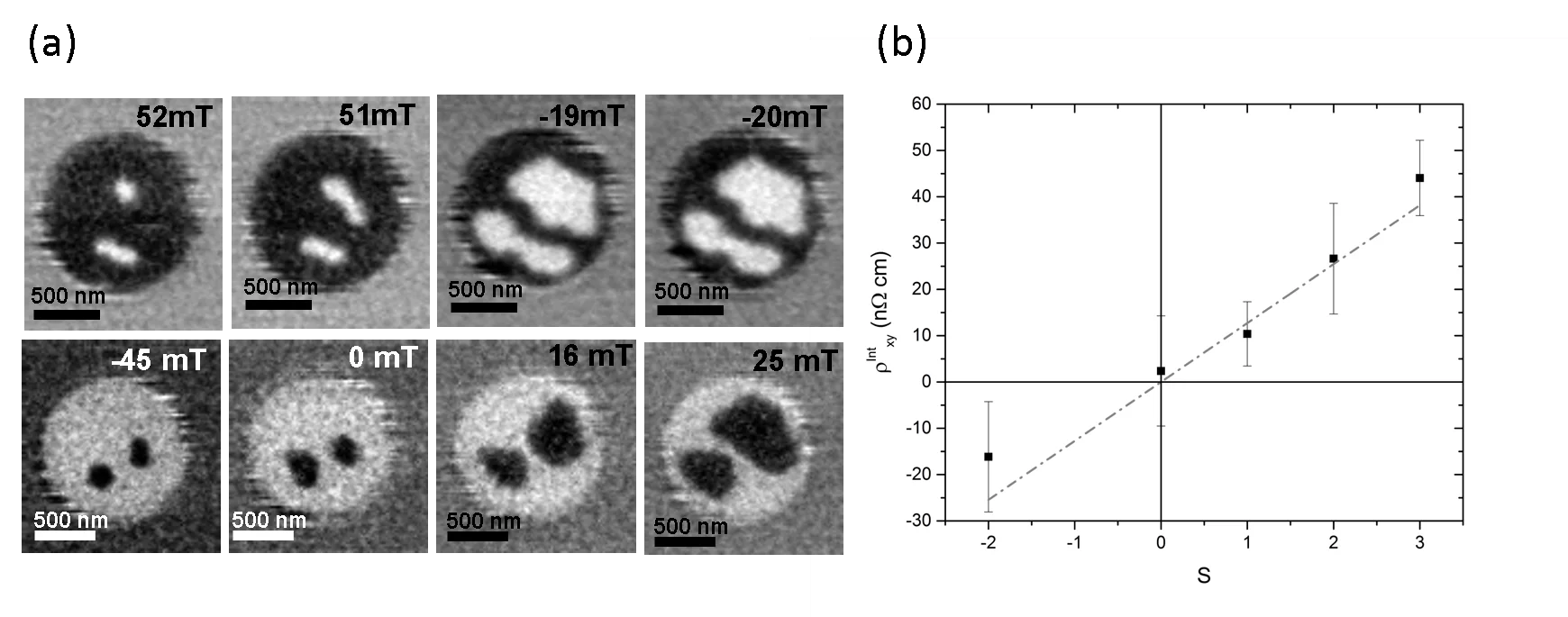Magnetic skyrmions, knot-like quasiparticles, have been recently attracting attention as candidates for novel high-density non-volatile data storage designs. In order to fabricate a skyrmion-based memory, reliable nucleation, motion, annihilation, and detection of the magnetic skyrmions need to be achieved. In this study, the electrical detection of magnetic skyrmions within a nanostructured element was carried out.
This work is a collaborative effort between the group of Prof. Christopher Marrows at the University of Leeds, where the skyrmion-bearing magnetic material was fabricated and patterned, and the magnetism research team at the PolLux endstation of the Swiss Light Source, where the x-ray magnetic microscopy measurements were performed. By taking advantage of the flexible modular design of the PolLux endstation, our teams were able to combine non-invasive scanning transmission x-ray microscopy imaging with in-situ electrical transport measurements, which allowed for the possibility to directly correlate the magnetic configuration of the nanostructured sample where the magnetic skyrmions were stabilized with its electrical transport signature. We observed a contribution to the Hall resistivity dependent on the number and sign of the skyrmion-like objects stabilized in the investigated sample. This contribution to the Hall resistivity was found to be independent from the size of the magnetic skyrmions, making it of technological relevance for high data density memory designs. Furthermore, the observed magnitude of the skyrmion-dependent contribution to the Hall resistivity is several orders of magnitude higher than the one expected from theoretical consideration, which will require the development of a new theoretical treatment to clarify these observations.
Contacts
Prof. Christopher H. MarrowsSchool of Physics and Astronomy
University of Leeds
Telephone: +44 (0)113 343 7126
E-mail: c.h.marrows@leeds.ac.uk
Dr. Jörg Raabe
Swiss Light Source
Paul Scherrer Institut
Telephone: +41 56 310 5193
E-mail: joerg.raabe@psi.ch
Original Publication
Discrete Hall resistivity contribution from Néel skyrmions in multilayer nanodiscsKatharina Zeissler, Simone Finizio, Kowsar Shahbazi, Jamie Massey, Fatma Al Ma’Mari, David M. Bracher, Armin Kleibert, Mark C. Rosamond, Edmund H. Linfield, Thomas A. Moore, Jörg Raabe, Gavin Burnell, and Christopher H. Marrows
Nature Nanotechnology, 2018
DOI: 10.1038/s41565-018-0268-y
